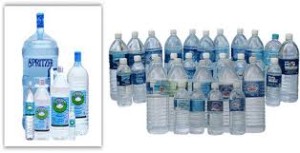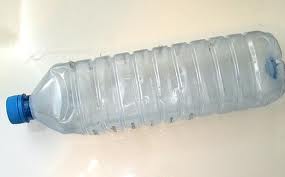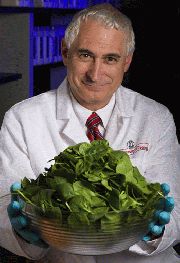More than 2,000 bottles of water from a Caledon producer shut down in July because of its bacteria-tainted product have been found in Toronto restaurants, hotels and a health food store in recent weeks, according to Rob Cribb of the Toronto Star.
While Blue Glass Water Co. Ltd. was under a provincial health order to stop producing and shipping its product as of July 18, Toronto health officials say  potentially tainted water was still entering food establishments here as recently as Sept. 27.
potentially tainted water was still entering food establishments here as recently as Sept. 27.
In an exclusive interview with the Star, Toronto’s medical officer of health, Dr. David McKeown, said Friday it is impossible to know whether there could be more of the banned product still out there. “We don’t have a complete and accurate distribution list (because) it has not been provided by the operator,” he said. “So, in terms of the challenges of responding, it’s more complex than other such cases.”
Marshall Kazman, the only listed director of Blue Glass Water Co. Ltd. in Ontario corporate filings, has dismissed the allegations in interviews with the Star, calling his water safe and naturally infused with cancer-fighting properties. The disbarred lawyer, who is currently facing criminal fraud charges, called the ordered shutdown of his facility “a witch hunt” and “much ado about nothing.” He said he has not shipped his product since being ordered closed in July. “If there was a real danger would you not think a recall would have been ordered months ago?” he said in a statement Saturday.
The Canadian Food Inspection Agency, which originally tested the water along with Peel Region in late July, found “elevated levels of aerobic colony counts” in some samples, it said in a statement to the Star. The tests did not show pathogens such as E. coli or parasites, it says. “Based on the absence of an identified hazard and the contained exposure . . . the CFIA determined that a risk assessment was not needed and as such, no recall action was requested.” The level of concern about the water is much higher among provincial and local health officials. Officials at both levels have told the Star that testing of the  company’s water revealed it was “heavily contaminated” and “unfit to drink.” The “overgrowth of bacteria” in the water “masked” identification of specific pathogens such as E. coli and coliform, said the province’s chief medical officer of health, Dr. Arlene King.
company’s water revealed it was “heavily contaminated” and “unfit to drink.” The “overgrowth of bacteria” in the water “masked” identification of specific pathogens such as E. coli and coliform, said the province’s chief medical officer of health, Dr. Arlene King.
The Star first reported health concerns about serious contamination in Blue Glass Water on Thursday, a threat nearly three months old that had not been made public. That lack of public notification meant the water continued to be served to unwitting customers across southern Ontario even as health officials were quietly looking for the water in food establishments for confiscation.
Following the Star’s questions to the province, the ministry issued a strongly worded statement warning the public not to consume Blue Glass Water because of the “potential health threat posed by these products.” Since the Star’s story, Toronto Public Health received several complaints from people who say they were made ill after drinking it. Inspectors are now investigating those cases.
So far, Toronto inspectors have found Blue Glass Water in 20 food establishments, ranging from high-end restaurants to a hotel and a health food store. The city is not identifying the establishments since they no longer serve the water and “they did nothing wrong,” said McKeown.
 Twenty-nine samples of water were drawn from such machines throughout the Klang Valley – and almost all were contaminated.
Twenty-nine samples of water were drawn from such machines throughout the Klang Valley – and almost all were contaminated.



 be ammonium chloride.
be ammonium chloride. I want a llama. Or so I’ve been telling Doug ever since I saw Tina the lasagna-eating llama in one of my favorite films, Napoleon Dynamite. Now we have a baby and our lifestyle is not compatible with llama tending.
I want a llama. Or so I’ve been telling Doug ever since I saw Tina the lasagna-eating llama in one of my favorite films, Napoleon Dynamite. Now we have a baby and our lifestyle is not compatible with llama tending..jpg) On Monday, the
On Monday, the  Michael Doyle (left), professor and director of the Center for Food Safety at the University of Georgia in Griffin, Ga. (Doyle developed an antimicrobial technology that was licensed earlier this year by the makers of Fit produce wash.) said,
Michael Doyle (left), professor and director of the Center for Food Safety at the University of Georgia in Griffin, Ga. (Doyle developed an antimicrobial technology that was licensed earlier this year by the makers of Fit produce wash.) said, In 2002, Health Canada and the CFIA began consulting on proposed regulatory changes for bottled water
In 2002, Health Canada and the CFIA began consulting on proposed regulatory changes for bottled water.gif) CFIA food safety and recall specialist Garfield Balsom said there are no hard-and-fast rules on what requires public notification.
CFIA food safety and recall specialist Garfield Balsom said there are no hard-and-fast rules on what requires public notification.